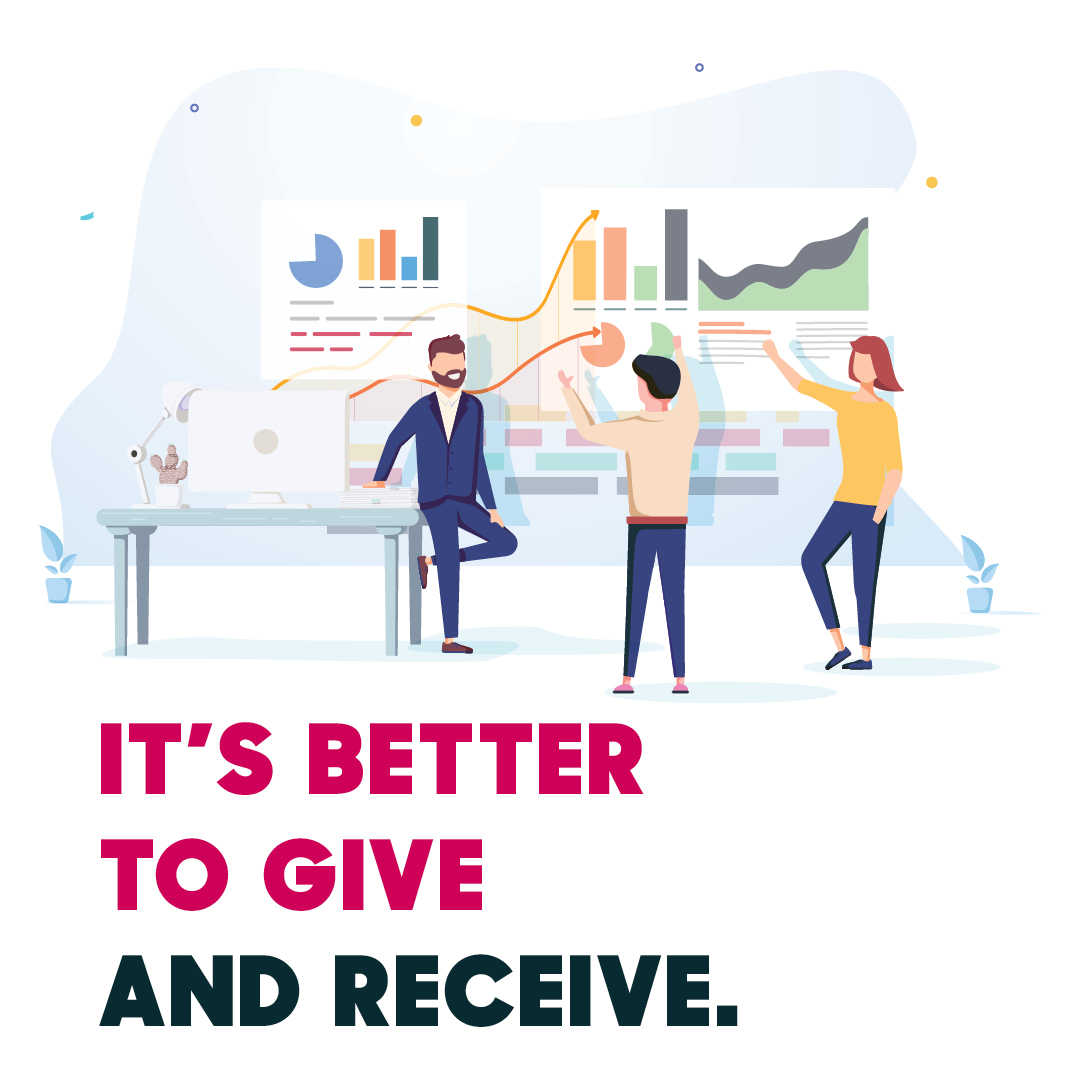
It’s Better to Give and Receive When Engaging in Non-Personal Promotion Data Research
When developing strategies and tactics for a non-personal promotion plan, what would you say is the desired end result? If you see the end result as sales and marketing deliverables, you’re only seeing half the picture. They aren’t the end, but a means to the end.
Since you can’t do market research with every healthcare professional, you need to use your outreach, especially digital, to both reinforce relationships and get clients to actively engage with you and your brand. This is particularly critical in today’s sales environment, when a return to traditional, in-person interactions is the ultimate in TBD.
Using the web and email are particularly powerful ways of gaining both direct and indirect insight into your clients’ interests, behaviors, activities, and how they relate to your brand – and how you can tailor your promotion plan.
Help me help you by helping me
It’s never about you – it’s always about the client. What can you do to make their job easier? How can you help them improve their services? Market research can be as simple as sending HCPs a marketing one pager and asking, “We’re redesigning our sales piece and value your expertise and insight. How can we better craft the content or the message to give you what you and your patients’ need?”
By using this approach, in one communication you can:
- Get yourself, your message, and brand in front of the client
- Reinforce your commitment to them and their patients
- Learn what’s important to them – and, by extension, to others in their specialty
- Gain insight into whether they open and read your emails
And all for the low cost of…nothing.
You can carry a similar methodology to your website by creating interactive content. For example:
- Q&As that let HCPs tell you what works best for them/what they want in terms of content, preferred delivery, etc
- Program “opt-ins” related to a specific product that allow you to add value to the client, their practice, and patients
Testing…testing…
Another way to gain low-cost insight from your emails and website is to use A/B testing. A/B testing involves sending out 2 variations of an email to see which subject or content garners the most clicks. This is an effective method for learning how to tailor your subject language for future emails. You don’t have to constrain yourself to a single, two-pronged test, however. You can send out a cascading tree of A/B tests, in real time, to see what does and doesn’t work. Similarly, A/B testing on everything from your website’s landing page to banner ads provides you with feedback on what is getting clicks, or what “sticks” – in other words, what is generating more page views and lower bounce rates.
Give a cookie, get some marketing chips
Cookies are an indispensable tool in learning how your clients are interacting with your website. The information you get helps you not only collect and analyze their behavior on search engines, social media, and other websites, but also allows you to use targeting to push out content related to what they were reading/doing on your website.
Did they leave your site to visit WebMD to research a topic or product related to something they saw on your website? What is their activity on LinkedIn or Facebook in a similarly connected way? Cookies ensure that your message follows them and appears as they browse the web – or in their inbox with a targeted email – so that you remain top of mind.
Improving your reception
“You have to give something to get something” is as true in your non-personal promotion plan as it is in life. It may seem a little “chicken or the egg” in terms of who is giving what to whom first, but when you look at it from a sales life cycle perspective, it all falls into place.
You give your clients personalized attention that lets them know that their needs are important to you. In return, they give you data that can help you improve both how you reach them (and other clients) and the content you provide. That, in turn, helps them do their jobs and serve their patients better, reinforces you and your brand, and makes them more likely to provide you with more data.
So, is it better to give or receive? When it comes to data, the answer is, “Both.”